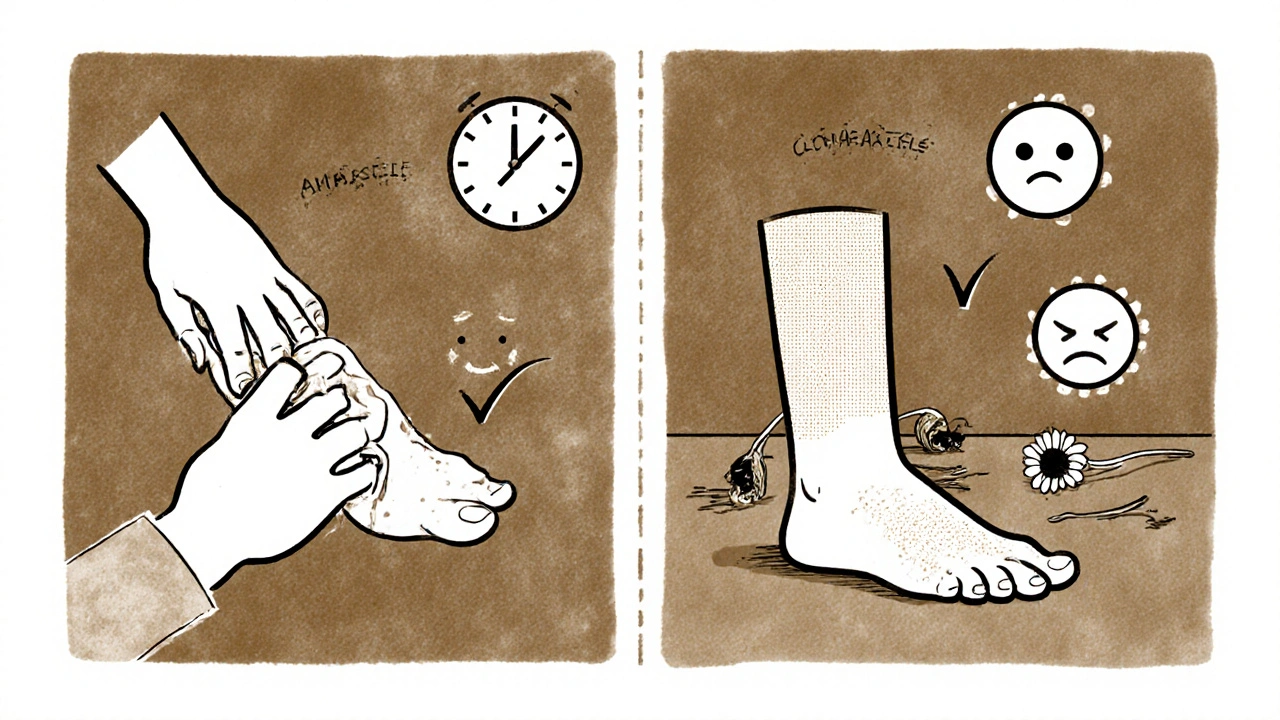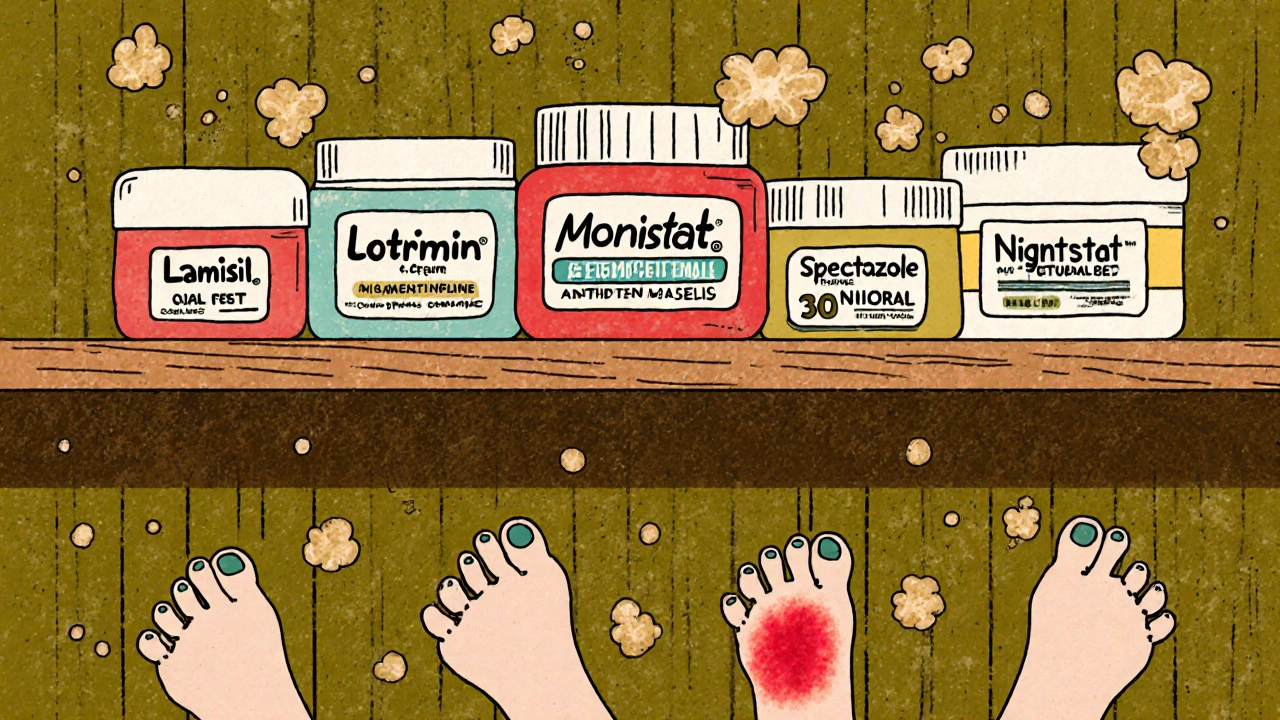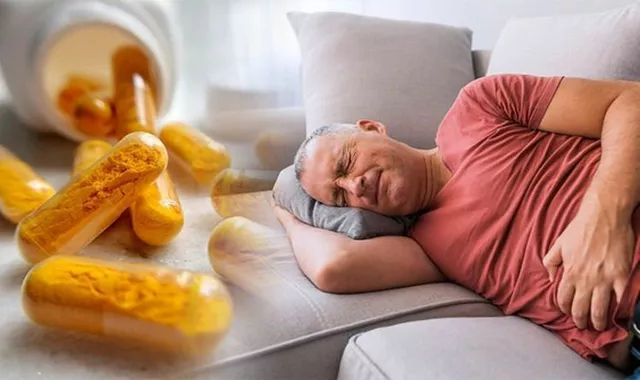If you’ve been dealing with a stubborn fungal skin infection - whether it’s athlete’s foot, jock itch, or ringworm - you’ve probably seen Lamisil Cream on the shelf. It’s one of the most common over-the-counter treatments, and for good reason. But is it always the best choice? What if it doesn’t work for you? Or maybe you’re worried about the cost, side effects, or just want to know what else is out there?
The truth is, Lamisil Cream (terbinafine) isn’t the only option. There are several other antifungal creams, some prescription, some OTC, that can work just as well - or even better - depending on your situation. This isn’t about pushing one product over another. It’s about helping you pick the right tool for your infection.
What Lamisil Cream Actually Does
Lamisil Cream contains terbinafine is a synthetic antifungal medication that kills fungi by disrupting their cell membranes. Also known as terbinafine hydrochloride, it was first approved in the 1990s and has since become a first-line treatment for dermatophyte infections. That means it’s especially effective against the types of fungi that cause athlete’s foot, ringworm, and jock itch - the same fungi that thrive in warm, damp areas like between your toes or under your groin.
Unlike some other antifungals that just stop fungi from growing, terbinafine actually kills them. That’s why many doctors recommend it for faster results. Studies show that after four weeks of daily use, about 70% of people with athlete’s foot see complete clearance of symptoms. That’s higher than most other topical options.
But here’s the catch: it only works if you use it correctly. You need to apply it once a day, for 1 to 4 weeks, depending on the infection. Skipping days or stopping early because it "looks better" is the number one reason treatment fails.
Top Alternatives to Lamisil Cream
So what happens if Lamisil doesn’t work? Or if you’d rather try something else? Here are the most commonly used alternatives - ranked by effectiveness, availability, and real-world user feedback.
1. Clotrimazole (Lotrimin, Mycelex)
clotrimazole is a broad-spectrum antifungal that stops fungi from reproducing by damaging their cell walls. It’s available over the counter under brand names like Lotrimin and Mycelex. It’s been around since the 1970s and is one of the most popular antifungal creams in the world.
Clotrimazole works well for mild to moderate infections. But it’s slower than terbinafine. Most people need to use it for 2 to 6 weeks. It’s also less effective at fully eradicating the fungus - meaning recurrence rates are higher. One study from the Journal of the American Academy of Dermatology found that clotrimazole cleared athlete’s foot in about 55% of cases after four weeks, compared to 70% for terbinafine.
Why use it then? It’s cheaper. It’s gentler on sensitive skin. And if you’ve had a bad reaction to terbinafine before, clotrimazole is a safe fallback.
2. Miconazole (Micatin, Monistat-Derm)
miconazole is another broad-spectrum antifungal that works similarly to clotrimazole, but has a slightly different chemical structure. It’s sold as Micatin and Monistat-Derm. It’s often combined with hydrocortisone to reduce itching and inflammation - which can be helpful if your skin is really irritated.
But here’s the downside: miconazole doesn’t kill fungi as effectively as terbinafine. It mainly stops them from multiplying. That means you’ll need to use it longer - often up to 6 weeks - and the chance of the infection coming back is higher. It’s also more likely to cause skin irritation in some people.
Good for: People with severe itching or redness who need quick symptom relief. Not ideal if you want a permanent fix.
3. Econazole (Spectazole)
econazole is a prescription antifungal that’s stronger than OTC options but still topical. It’s sold as Spectazole and is often used when OTC creams fail.
Econazole has a higher success rate than clotrimazole or miconazole - around 65% clearance after four weeks. It’s also effective against some yeast infections, like candidiasis, which terbinafine doesn’t handle as well. That makes it a good option if you’re not sure what kind of fungus you’re dealing with.
Downside? You need a prescription. And it’s more expensive than OTC options. But if you’ve tried Lamisil and it didn’t work, econazole is often the next step doctors recommend.
4. Ketoconazole (Nizoral Cream)
ketoconazole is a broad-spectrum antifungal that targets both dermatophytes and yeasts like Candida. It’s available as Nizoral Cream (2%) and is sold over the counter in many countries, including New Zealand.
Ketoconazole is especially useful if you have a mixed infection - say, athlete’s foot plus a yeast overgrowth. It’s also effective for seborrheic dermatitis and dandruff, so if you’ve got flaky skin on your scalp or face too, it’s a multitasker.
But it’s not as fast-acting as terbinafine. You’ll need to use it for 2 to 4 weeks. Some users report mild burning or stinging at first. Also, it can stain clothing if you don’t let it dry fully.
5. Tolnaftate (Tinactin, Athlete’s Foot Powder)
tolnaftate is a non-prescription antifungal that’s been used since the 1960s. It’s available as cream, spray, and powder. Tinactin is the most common brand.
Tolnaftate is one of the oldest antifungals still in use. It’s cheap, widely available, and generally safe. But its effectiveness is lower than terbinafine - studies show about 50-60% success rates. It’s also less effective against thick, long-standing infections.
Best for: Mild cases, prevention, or as a backup when other options aren’t available. The powder form is great for keeping feet dry after treatment.
Comparison Table: Lamisil vs Alternatives
| Product | Active Ingredient | OTC or Rx? | Time to Clear | Success Rate (4 weeks) | Best For | Downsides |
|---|---|---|---|---|---|---|
| Lamisil Cream | Terbinafine | OTC | 1-4 weeks | 70% | Dermatophyte infections (athlete’s foot, ringworm) | Can cause mild skin irritation |
| Lotrimin | Clotrimazole | OTC | 2-6 weeks | 55% | Mild infections, sensitive skin | Higher recurrence rate |
| Monistat-Derm | Miconazole | OTC | 2-6 weeks | 50-60% | Itchy, inflamed skin | Less effective at killing fungus |
| Spectazole | Econazole | Rx | 2-4 weeks | 65% | Failed OTC treatment, yeast involvement | Requires prescription |
| Nizoral Cream | Ketoconazole | OTC | 2-4 weeks | 60% | Mixed infections, dandruff, seborrhea | Can stain clothes |
| Tinactin | Tolnaftate | OTC | 4-6 weeks | 50-60% | Mild cases, prevention | Slowest action, low success on stubborn cases |

When to Skip Creams Altogether
Not every fungal infection needs a cream. Sometimes, topical treatments just aren’t enough.
If your infection has spread beyond the skin surface - say, into your nails, or if you’ve had recurring infections for over a year - you might need oral medication. Terbinafine tablets (Lamisil pills) are far more effective for nail fungus than the cream. Studies show oral terbinafine clears toenail fungus in about 70% of cases, compared to less than 20% with topical cream alone.
Also, if you’ve tried three different antifungal creams for 4 weeks each and nothing worked, it’s not necessarily that you’re "resistant." It could be that you’ve got a different condition altogether - like psoriasis, eczema, or even a bacterial infection. A dermatologist can do a simple skin scraping to confirm what you’re dealing with.
What to Avoid
There are a lot of "natural" remedies floating around: tea tree oil, vinegar soaks, coconut oil, garlic paste. Some people swear by them. But here’s the reality: there’s no solid clinical evidence that any of these work as well as FDA- or Medsafe-approved antifungals.
Tea tree oil, for example, has some lab studies showing antifungal properties. But when tested on real people with athlete’s foot, it was no better than a placebo in one major trial. And if you apply undiluted oils to broken skin, you risk chemical burns.
Don’t waste time or money on unproven fixes. Stick with what’s been tested and approved. If you want to try a natural option, use it as a supplement - not a replacement.
How to Pick the Right One
Here’s a simple decision tree to help you choose:
- Is it your first time treating this infection? Start with Lamisil Cream (terbinafine). It’s the fastest and most reliable.
- Do you have sensitive skin or allergies? Try clotrimazole or miconazole. They’re gentler.
- Is your skin red, swollen, and itchy? Miconazole with hydrocortisone can give you quick relief.
- Did Lamisil fail after 4 weeks? See a doctor. You might need econazole or oral medication.
- Are you treating nails or thick skin? Creams won’t cut it. Oral terbinafine is the only proven option.
- Are you trying to prevent recurrence? Use tolnaftate powder daily after showering. Keep feet dry.

Real-World Tips That Actually Work
Medication is only half the battle. Fungal infections come back because the environment stays perfect for them.
- Always dry your feet thoroughly after showering - especially between the toes.
- Wear breathable socks (cotton or moisture-wicking) and change them daily.
- Don’t walk barefoot in public showers, pools, or locker rooms.
- Disinfect your shoes with antifungal spray or UV light devices.
- Use a separate towel for infected areas - don’t share towels.
- Don’t stop treatment early, even if it looks better. Fungi hide deep in the skin.
One patient I spoke with in Wellington - a teacher who taught barefoot in the gym - kept getting athlete’s foot every winter. She tried every cream. Then she started using tolnaftate powder in her shoes every morning and switched to moisture-wicking socks. Two years later, she hasn’t had a flare-up.
Frequently Asked Questions
Can I use Lamisil Cream on my face?
No. Lamisil Cream is only approved for use on the feet, groin, and body. The skin on your face is thinner and more sensitive. Using it there can cause irritation, redness, or peeling. If you have ringworm on your face, see a doctor - they’ll likely prescribe a different antifungal, like ketoconazole cream or an oral medication.
How long after applying Lamisil Cream can I put on socks or shoes?
Wait at least 10 minutes after applying the cream to let it dry fully. If you put on socks or shoes too soon, you risk trapping moisture, which makes the fungus worse. Also, the cream can rub off and stain fabric. Letting it absorb completely helps it work better.
Is Lamisil Cream safe during pregnancy?
Terbinafine cream is considered low risk for topical use during pregnancy because very little is absorbed into the bloodstream. But there’s limited data. Most doctors recommend avoiding it in the first trimester unless absolutely necessary. Clotrimazole is often preferred during pregnancy because it has more safety data. Always check with your doctor before using any antifungal while pregnant.
Can I use Lamisil Cream with other skin products?
Yes, but not at the same time. Wait at least 1 hour after applying Lamisil before using moisturizers, lotions, or steroid creams. Applying them together can dilute the antifungal and reduce its effectiveness. If you’re using a steroid for inflammation, ask your doctor how to time both products safely.
What if my infection gets worse after using Lamisil?
If your skin becomes more red, swollen, painful, or starts oozing, stop using the cream immediately. This could mean you have a secondary bacterial infection - not a fungal one. Don’t keep applying antifungal cream. See a doctor. You might need antibiotics or a different diagnosis.
Are generic terbinafine creams as good as Lamisil?
Yes. Generic terbinafine creams contain the same active ingredient at the same strength. The only differences are in inactive ingredients like fragrances or preservatives. If you’ve had no reaction to Lamisil, a generic version should work just as well - and cost about half as much. Always check the label to confirm it contains 1% terbinafine.
Next Steps
If you’re just starting out, grab a tube of Lamisil Cream and follow the instructions exactly. Apply it daily for the full course - even if it looks better after a week.
If you’ve tried Lamisil and it didn’t work, don’t keep buying the same thing. See a pharmacist or doctor. Bring the product you used, how long you used it, and what your symptoms were. They can help you choose the next step - whether it’s switching to econazole, going oral, or ruling out another condition.
And if you’re tired of recurring infections, focus on prevention. Dry your feet. Change your socks. Don’t share towels. These small habits matter more than any cream.








14 comments
Lugene Blair
Lamisil saved my life after three failed rounds of Lotrimin. I thought I was stuck with athlete’s foot forever - then I used it for 4 weeks straight, no skipping days, and boom, gone. Don’t stop when it looks better. Fungi are sneaky bastards.
Also, dry your damn feet. I started using cotton socks and a blow dryer on low after showers. Game changer.
William Cuthbertson
It’s fascinating, isn’t it, how we’ve come to rely so heavily on synthetic chemistry to combat organisms that have existed since before mammals walked the earth? Terbinafine doesn’t just kill fungi - it disrupts their very architecture, their membrane integrity, like a molecular saboteur.
Yet, in the grand tapestry of evolution, these fungi are not our enemies - they’re simply occupying niches we’ve inadvertently created: damp locker rooms, synthetic socks, communal showers. We’ve engineered the perfect storm, then blamed the fungus for showing up.
Perhaps the real question isn’t which cream works best - but why we keep recreating the conditions that invite them in. Do we treat the fungus… or the culture?
And yet, I still reach for Lamisil. Because philosophy doesn’t cure jock itch - science does.
Eben Neppie
Clotrimazole has a 55% clearance rate? That’s not "effective" - that’s barely better than placebo. And miconazole with hydrocortisone? You’re masking symptoms, not treating the infection. That’s like putting duct tape on a leaking pipe.
And let’s be crystal clear: if you’re using tea tree oil because you think it’s "natural" and therefore safer, you’re either delusional or misinformed. Natural ≠ effective. Arsenic is natural. So is botulinum toxin.
Terbinafine is the gold standard. Period. Generic versions are identical in active ingredient. Save your money. Stop wasting time on weak alternatives unless you have a documented allergy - and even then, consult a dermatologist, not Reddit.
Hudson Owen
I appreciate the thoroughness of this post. It provides a balanced, evidence-based overview that respects the complexity of fungal infections and the diversity of patient needs.
It is important to acknowledge that while Lamisil is often the most effective option, individual physiological differences, skin sensitivity, and comorbid conditions necessitate personalized approaches.
I encourage all readers to consider not only pharmacological efficacy but also lifestyle factors - hygiene, footwear, and environmental control - as integral components of successful management.
Thank you for emphasizing the importance of medical consultation when self-treatment fails. Too many people persist with OTC remedies far beyond reasonable limits.
Steven Shu
My buddy used ketoconazole for his scalp ringworm and it cleared up in 10 days. He’s a gym rat - always sweaty, never showers right after. He switched to Nizoral and now wipes down his gear with antifungal spray. No recurrence in 18 months.
Also, don’t sleep in your socks. I learned that the hard way.
Anna S.
Why do people still trust Big Pharma’s "miracle creams" when we all know they’re just trying to sell you something? Tea tree oil has been used for centuries by Indigenous cultures - you think a 1990s synthetic chemical is safer? Wake up.
And why are you even using cream? Just wash your feet in vinegar and salt. It’s cheaper, and your body will thank you. Stop feeding the machine.
Yaseen Muhammad
As someone from India where fungal infections are rampant due to humidity, I can confirm: terbinafine works - but only if you use it correctly. Many patients here stop after 10 days because "it doesn’t itch anymore." That’s why recurrence rates are so high.
Also, I’ve seen econazole work wonders for patients with both fungal and yeast overgrowth - especially in the groin area. It’s not always about the brand. It’s about matching the drug to the bug.
And yes, drying feet is non-negotiable. We use a small fan in our bathrooms here. Simple. Effective.
Sam Tyler
Let’s talk about the elephant in the room: people treat fungal infections like they’re a one-time fix. They buy the cream, use it for a week, feel better, and assume they’re done.
But fungi don’t live on the surface - they burrow. They hide in dead skin cells, under nails, in the creases where your toes meet. That’s why you need the full course - 2 to 6 weeks, depending on the product.
And let’s not forget footwear. I used to wear the same sneakers for months. Then I bought two pairs and rotated them. Let one dry out completely between uses. UV shoe sanitizers? Worth every penny.
Also, if you’re using hydrocortisone cream with miconazole - don’t use it for more than two weeks. Steroids suppress your immune response. You’re trading short-term relief for long-term trouble.
And yes, generics are fine. I’ve used store-brand terbinafine for years. Same active ingredient. Same results. Save $15.
shridhar shanbhag
Been there. Done that. Used Lamisil, then Lotrimin, then Nizoral. Nothing worked until I went to a dermatologist. Turned out it wasn’t fungus - it was psoriasis. They did a scraping. Took 2 minutes. Saved me 6 months of wasted cream.
So if you’ve tried three creams and nothing works - don’t buy another one. Go see a doctor. Seriously. It’s not that hard.
John Dumproff
I just want to say thank you for writing this. I’ve been embarrassed to talk about my jock itch for years. Found this post while searching late at night. You made me feel like it’s normal, and there’s a real solution.
Started Lamisil yesterday. Going to stick with it. No more skipping days. And I’m buying moisture-wicking socks tomorrow.
You didn’t just give me info - you gave me hope.
Milind Caspar
Let me ask you this: Who funds the studies that claim terbinafine is "70% effective"? Pharmaceutical companies. Who profits when you buy Lamisil? Pharmaceutical companies. Who markets the "natural alternatives" as dangerous? Pharmaceutical companies.
And yet, you’re surprised when people question the narrative?
What if the entire antifungal industry is built on overdiagnosis? What if most "fungal infections" are just mild skin irritation - and we’re being conditioned to fear our own bodies?
Tea tree oil has 3000 years of ethnobotanical use. A 30-year-old synthetic molecule? That’s not science - that’s marketing.
And why is there no mention of probiotics? The skin microbiome is critical. You kill the fungus - but do you restore balance?
Or are you just another consumer in the machine?
Rose Macaulay
I used Lamisil and it burned so bad I cried. Switched to clotrimazole - no burning, just a little stinging. Took longer but my skin didn’t feel like it was on fire.
Also, I started using a separate towel just for my feet. No more sharing with my partner. Small change. Huge difference.
Ellen Frida
OMG I think I’ve been using the wrong cream all this time!! I’ve been using Tinactin for like 2 years and it keeps coming back!! I just thought I was cursed!! Maybe I need Lamisil?? I heard it’s like magic??
Michael Harris
Anyone else notice how this post is basically a 2000-word advertisement for Lamisil disguised as medical advice? Terbinafine is expensive. Generic clotrimazole is cheaper and works fine for 80% of people. Why are you pushing the brand name? Because you’re paid to.
And you say tea tree oil has no evidence? You’re ignoring dozens of peer-reviewed studies showing efficacy comparable to low-dose antifungals.
Stop gaslighting people who use natural remedies. You’re not a doctor. You’re a salesperson with a blog.